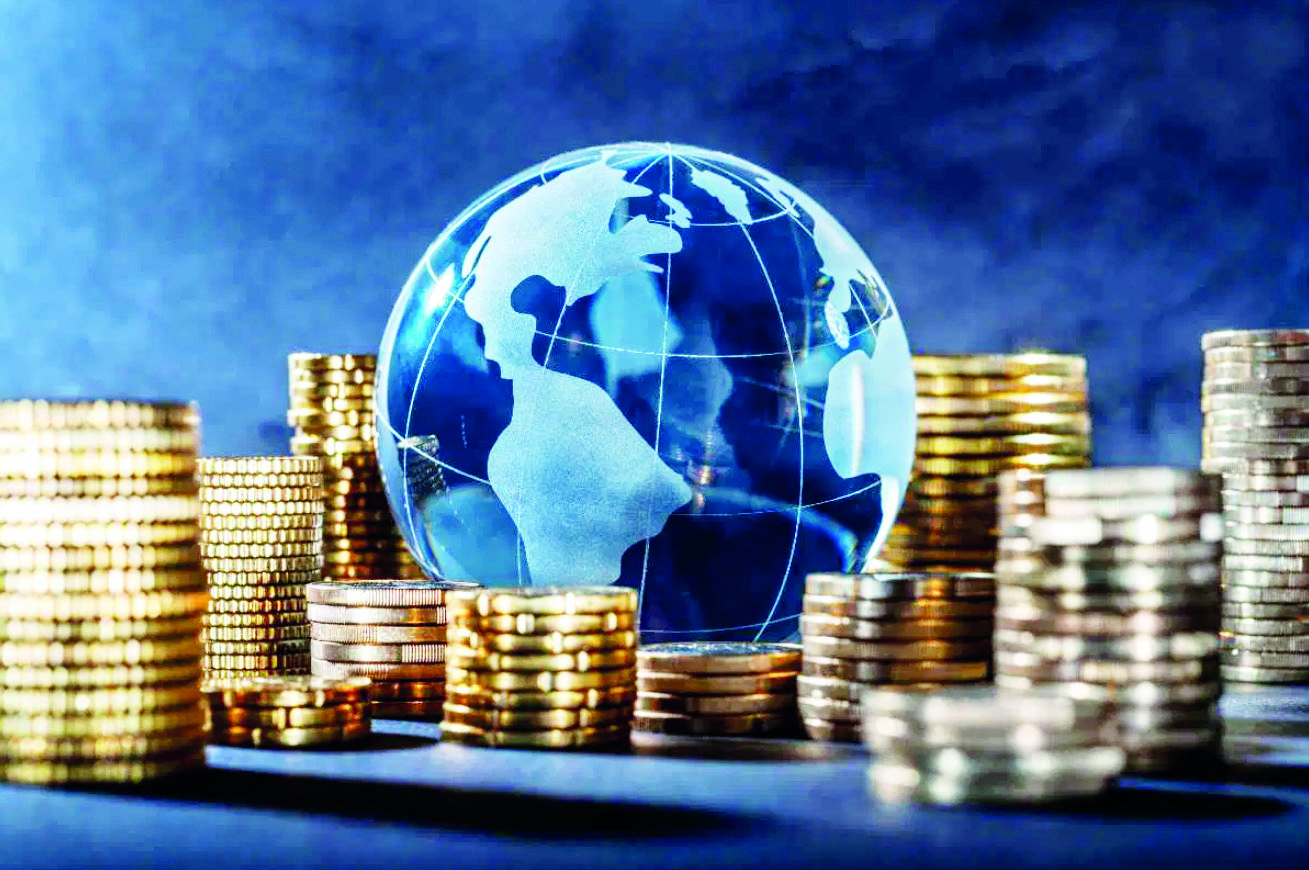Lurking turmoil

UNCTAD, in its latest report titled ‘A World of Debt: A Growing Burden to Global Prosperity’, highlights the alarming surge in global public debt, driven by cascading crises in recent years. The growing debt burden disproportionately impacts developing countries, as servicing it diverts essential resources away from their development aspirations. The rise in global interest rates since 2022 further strained public budgets in developing countries. High interest payments are outpacing the growth in essential public expenditures such as health, education, and climate action.
The UNCTAD report alleges that the global financial architecture is no longer capable of meeting the needs of the world in the 21st century. This is a substantial challenge to sustainable development. Developing countries must not be forced to choose between servicing their debt and serving their people. A total of 3.3 billion people live in countries that spend more on interest payments than on either education or health. This situation is untenable and the international financial architecture must change to ensure a prosperous future for both people and the planet. The UN body strongly suggests that a reform is not only necessary, it is urgent.
Global debt scenario
The May 7 (2024) issue of the IIF Global Debt Monitor, published by the Institute of International Finance, reveals that the global debt has grown by some USD 1.3 trillion to a new record high of USD 315 trillion in Q1 2024. As per the report, this latest global debt wave has been the biggest, fastest, and most wide-ranging rise since World War II, and coincided with the COVID-19 pandemic. Of the USD 315 trillion debt stock, household debt, which includes mortgages, credit cards and student debt, among others, amounted to USD 59.1 trillion. Business debt, which corporations use to finance their operations and growth, stood at USD 164.5 trillion, and the financial sector alone made up USD 70.4 trillion of that amount. Public debt made up the rest at USD 91.4 trillion, reports CNBC TV.
The report also reveals (Refer to table 1) that around two-thirds of the USD 315 trillion global debt originates from mature economies, with Japan and the United States contributing the most to that debt pile. Nonetheless, the debt-to-GDP ratio for mature economies has been falling in general. But Japan stands out as one of the world’s most heavily indebted countries with a Debt-GDP ratio of over 600 per cent. (refer table 3)
The emerging markets of the global south held USD 105 trillion in debt, but their debt-to-GDP ratio has hit a new high of 257 per cent. China, India and Mexico were the biggest contributors to the Southern countries’ debt. During the last one decade, the debt of the global south has increased from USD 55 trillion to USD 105 trillion.
The global debt stock has increased from USD 220 trillion to USD 315 trillion during 2016-2024 Q1 ( refer to table 2). And the debt GDP (weighted average) ratio had increased from 320 per cent to 333 per cent. The debt-GDP ratio of the emerging south has reached 257 per cent (refer to table 3) . Though lower than the global average, this ratio has increased sharply during the last three years.
Government interest expenses as a percentage of government revenue is rising. The rise is more pronounced in emerging developing countries than the matured developed countries. For example, between 2021 and 2024, the global average interest expenses increased to 26 per cent of the government revenue, from 23 per cent three years before. Table 4 reveals that in the case of the USA, the increases are from 8 per cent to 12 per cent; for the UK and Japan, the figures remained the same at 7 per cent and 2 per cent, respectively. But in the emerging developing countries the interest burden for debt is very high. For Egypt, the corresponding figures are 40 per cent and 68 per cent, and for Pakistan, the interest burden as a per cent of government revenue has increased from 48 per cent to 60 per cent during 2021-2024.
Debt crisis of the global south
Economic historians believe that this emerging debt crisis has roots going back nearly thirty years. The Heavily Indebted Poor Countries (HIPC) programme, launched in 1996 by the World Bank and the IMF, was a landmark effort to reduce the unsustainable debt burden of the world’s poorest countries. It is claimed that the initiative succeeded in reducing debts by the mid-2000s for many eligible nations. HIPC sought to provide comprehensive debt relief to facilitate poverty reduction and allow for increased spending on health, education, and other similar endeavours.
It is claimed that as HIPC progressed, and many countries lowered their debt burdens, the global financial landscape shifted toward the zero interest rate policy in response to the 2008 global financial crisis. ZIRP was a monetary policy intended to stimulate economic growth by keeping central bank short-term interest rates near zero. The prolonged period of low interest rates spurred a search for yield among global investors, who turned their attention to newly debt-free frontier markets, drawn by higher returns and the potential for strategic investments in HIPC initiative countries. This period saw a surge in lending by an array of creditors, including commercial creditors, Eurobond lenders, and the People’s Republic of China (PRC) through its Belt and Road Initiative (BRI). The BRI funded infrastructure projects as part of a broader strategy to enhance global trade networks and increase the PRC’s geopolitical influence. The BRI, coupled with the global search for yield during the ZIRP period, significantly altered the dynamics of international lending, comments Rafael Romeu (April 2024) of CSIS.
A recent Debt Service Watch database shows that the citizens of the Global South now face the worst debt crisis since global records began. Debt service is absorbing an average 38 per cent of budget revenue and 30 per cent of spending across the South, rising to 54 per cent of revenue and 40 per cent of spending in Africa. Spread across all continents, 35 countries are paying more than half of revenue, and 54 over one third. These figures are more than twice the levels faced by low-income countries before the HIPC and Multilateral Debt Relief Initiative (MDRI) of the 1990s.
China’s critical role
An interesting study by Horn, Parks, Reinhart and Trebesh (April 2023) shows that China has launched a new global system for cross-border rescue lending to countries in debt distress. The authors have built a comprehensive dataset on China’s overseas bailouts between 2000 and 2021 and provided new insights into China’s growing role in the global financial system.
A key finding of the study is that the global swap line network, put in place by the People’s Bank of China, is increasingly used as a financial rescue mechanism, with more than USD 170 billion in liquidity support extended to crisis countries. The swaps bolster gross reserves and are mostly drawn by distressed countries with low liquidity ratios.
In addition, the study shows that Chinese state-owned banks and enterprises have given out an additional USD 70 billion in rescue loans for balance of payments support. Taken together, China’s overseas bailouts correspond to more than 20 per cent of total IMF lending over the past decade and bailout amounts are growing fast.
However, according to the authors, China’s rescue loans differ from those of established international lenders of last resort in that they (i) are opaque, (ii) carry relatively high interest rates, and (iii) are almost exclusively targeted to debtors of China’s Belt and Road Initiative. These findings have implications for the international financial and monetary architecture, which is becoming more multipolar, less institutionalised, and less transparent.
India’s impending debt crisis
Table 3 shows that India’s total debt as a percentage of GDP has marginally increased from 180.5 per cent to 185.3 per cent during the last one year. Compared to India, China’s Debt GDP ratio is much higher at 364.7 per cent.
India spends 30 per cent of the government revenue towards interest expenses of public debts. During 2021 -24, the interest expenses as a percentage of government revenue increased by 5 per cent (refer to table 4). This compelled the government to cut budgetary allocation for development activities. The IMF has raised concerns about the long-term sustainability of India’s debts. The IMF, in its report, states that India’s general government debt, including the Union and State governments, could be 100 per cent of the GDP under adverse circumstances by fiscal 2028. According to them, “Long-term risks are high because considerable investment is required to reach India’s climate change mitigation targets and improve resilience to climate stresses and natural disasters. This suggests that new and preferably concessional sources of financing are needed, as well as greater private sector investment and carbon pricing or equivalent mechanism.” However, the Finance Ministry refuted IMF projections.
Another area of concern is the increase in the household debt to 38.1 per cent of GDP from 36.9 per cent one year before (refer to table 3). This means that Indian households owe a larger portion of their total income (GDP) as debt than ever before.
A recent Bloomberg News report suggested that credit card spending by Indians has surged to a record high, significantly increasing the chances of potential defaults during the festive season. Data from the Reserve Bank of India (RBI) indicates that the amount transacted through credit cards rose to an all-time high of Rs 1.48 lakh crore in August 2023, up from Rs 1.45 lakh crore in July. With greater credit card adoption and rising spends, defaults are rising too. In 2022-23, credit card defaults stood at Rs 4,072 crore, which was over Rs 950 crore higher than the default of Rs 3,122 crore in 2021-22, reports India Today.
Reminding that all the previous crises followed credit booms, noted economist Ashoka Modi cautioned policy makers about ‘India’s looming financial crisis.’ According to him, rapid credit growth is akin to a siren song. It lures economies with the promise of prosperity only to lead them into crises. Each financial boom is framed as a story of financial innovation and good times.
Observation
The global financial system is operating dangerously on a quiet debt volcano. It will devastate the global economy if corrective measures are not taken immediately.
As an alternative to multilateral funding agencies and existing lenders, China is fast emerging as an international lender of last resort.
In India, a USA type sub-prime crisis is foreseen which may trigger a major financial and economic crisis.
As the underlying structural causes of global south’s unsustainable indebtedness is rooted in the unequal economic, financial and trade relations, the colonial
roots and the differentiated responsibilities in relation to global challenges, including the climate emergency, there is a need for ‘debt justice’. A debt justice movement across the global south is the need of the hour.
Views expressed are personal.



